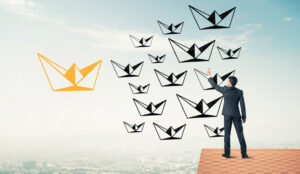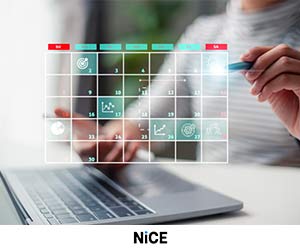To many CEOs it’s an unwelcome development, but one that’s undeniable – businesses are no longer in charge.
Companies are not the only ones with information, power and technology. Consumers are armed with a smartphone, and this single device has changed the business to consumer relationship.
Technology has disrupted the status quo, shifting the balance of power between business and customer in favour of consumers.
With a smartphone in every pocket, the customer-led economy is here – but are you ready?
The Economist published a report sponsored by Salesforce on the customer-led economy in 2013, but four years on, this phenomenon is only growing.
Here, we take a look at the changing relationship between business and consumer and how you can adapt the service you offer to stay ahead.
Connecting with the “Human Network”
The average consumer has changed – from the traditional consumer to a digital consumer and to, most recently, the connected consumer, or “Generation C”.
What’s fundamentally changed is that your customers are not simply an audience; they’re an audience with audiences.
Consumers are now effectively a “human network” which relays information and experiences in real time. The average consumer is connected to at least 150 people on Facebook and around 140 people on Twitter.
With the rise of social media, businesses are no longer talking to one customer, they’re talking to a customer and their audience, and potentially their audience’s audience.
It’s therefore not surprising that positive or negative customer experiences spread like wildfire. Customer service can no longer be kept behind closed doors, so the benefits of getting it right are huge, but the repercussions of getting it wrong are equally big.
Consumers can easily reach more people than ever before – including many people they don’t actually know. The ability to reach such a wide audience was previously something only a business could achieve, but now consumers have caught up -and with a wider audience, they have greater power.
Plus, Generation C are much more in control of their online experience than ever before. The average customer has their own digital ecosystem or “ego system” of social media feeds.
The implication is that if businesses want to reach customers online, they have to enter their personal online world, so a one-size-fits-all approach simply doesn’t work.
Digital Darwinism – and the Need to Adapt
Ever feel like you’re constantly playing catch-up? That’s because the customer-led economy has led to the phenomenon of “Digital Darwinism”.
This phrase describes the evolution of customer behaviour, where society and technology evolve faster than some companies’ ability to adapt.
Just like Darwin’s theory of evolution didn’t really mean that the “fittest” survived, but rather the most adaptable, the same applies to Digital Darwinism. It’s not the strongest, richest businesses that survive, but those that are the most adaptable to changes in technology and consumer behaviour.
This phenomenon has been growing for some time and is brought into focus when you look at how long companies stay in the Fortune 500. More than 40% of the companies that were in the Fortune 500 in 2000 were no longer there in 2010.
How Can Businesses Adapt to Consumer Needs?
So, how do you please the increasingly powerful consumer? Customer experience is now a key differentiator, so excellent customer communication, through both service and marketing, is essential.
Other companies may be able to copy your products or compete with your prices, but it’s near impossible to compete with an emotional connection a customer has with a brand. That’s because this connection is the result of the hard-to-define “experience”.
Every touch point becomes an opportunity to create an experience with your brand – from the marketing communications to the product itself, right through to customer support.
In the early days of the online world, the Internet was an anonymous place of unknown users, blanket marketing messages and a one-size-fits-all shopping experience.
In 2015, things couldn’t have changed more – it’s now got to the point where the online world is more personalised than the real world.
Consumers have personalised accounts for everything from social media to news and shopping. Going online for many people is like entering their own personalised bubble and companies need to find out how they can become part of this.
However, be warned, cross the line into the creepy kind of personal, and the bubble has very much burst.
Personalised, Multi-Channel Service
To survive in the customer-led economy, businesses have to adapt to customer behaviour. They need to collect the right data to ensure every interaction with their customers is personalised.
Part of the personalisation of customer experience includes letting consumers choose how they want to get in touch.
Providing a seamless omnichannel service where a conversation can hop from Twitter to phone to email, without causing confusion or hassle, is essential.
Businesses need to be able to track every customer conversation across multiple channels and provide a personalised experience in every channel – and ContactWorld for Service can help you do just that.
From integrating with Salesforce to provide a joined-up up view of all customer communications, to offering an intelligent routing system to take every customer to the most appropriate agent, this solution is designed to help you engage with the tech-savvy, connected customers of today.
It’s these important touches that ensure the customer feels like your agent is talking to them personally and not just one of thousands of identical customers. A service tailored to every customer is the way forward when the customer is well and truly in charge.
How do you think that businesses can stay ahead in the customer-led economy? Share your thoughts below.
Author: Guest Author
Published On: 2nd Aug 2017 - Last modified: 26th Feb 2019
Read more about - Archived Content





























